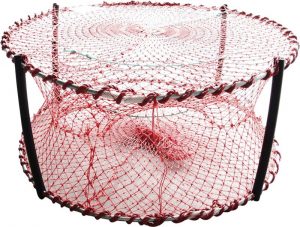People in different parts of the world are not always referring to exactly the same things when they use the words “trap” and “pot”. In general, traps are large structures fixed to the shore.
Pots are smaller, movable traps, enclosed baskets or boxes that are set from a boat or by hand.

A simple system for the naming of traps and pots was produced by von Brandt in 1959 for FAO. General types of traps and pots include:
* Traps that form barriers to fish movement, including walls or dams, fences, fyke nets, gratings and watched chambers that can be closed by the fisher after the fish enters;
* Traps that make hiding places (habitat traps), including brush traps and octopus pots; tubular traps, which are narrow funnels or hoses that stop the fish from getting out backwards; eel tubes fall into this category;
*Traps that are mechanically closed by the fish, including gravity traps or box traps, bent-rod traps (whipping bough traps), torsion traps and snares;
* Baskets, which are enclosed traps and pots usually with a structure to make escape difficult; they include pots made of wood, wire or plastic, conical and drum-like traps made of netting with hoops and frames (e.g. drum nets) and box- like traps made with strong frames;
* Large open traps or corrals with a part or mechanism to stop fish from escaping, which can be fixed on sticks or anchors, set or floating;
* Traps set out of the water to catch fish such as flying fish that jump off the tops of waves and glide over the surface when in danger; these can be box-shaped, rafts, boats or nets (“veranda” net types); scoop nets are sometimes used for making fish jump. Pitfall traps can be used for marine animals that migrate over land, such as coconut crabs.
